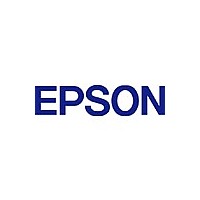S1D13705F00A200 Epson, S1D13705F00A200 Datasheet - Page 129

S1D13705F00A200
Manufacturer Part Number
S1D13705F00A200
Description
Manufacturer
Epson
Datasheet
1.S1D13705F00A200.pdf
(266 pages)
Specifications of S1D13705F00A200
Operating Supply Voltage (typ)
3.3/5V
Operating Temperature (min)
-40C
Operating Temperature (max)
85C
Operating Temperature Classification
Industrial
Package Type
TQFP
Pin Count
80
Mounting
Surface Mount
Operating Supply Voltage (min)
2.7V
Operating Supply Voltage (max)
5.5V
Lead Free Status / Rohs Status
Compliant
Available stocks
Company
Part Number
Manufacturer
Quantity
Price
Part Number:
S1D13705F00A200
Manufacturer:
EPSON/爱普生
Quantity:
20 000
- Current page: 129 of 266
- Download datasheet (3Mb)
9: HARDWARE ABSTRACTION LAYER (HAL)
9.5 Porting LIBSE to a new target platform
Building the LIBSE library for SH3 target example
2-44
Building Epson Research and Development applications like a simple HelloApp for a new target
platform requires 3 things, the HelloApp code, the 13705 HAL library, and a some standard C
functions (portable ones are encapsulated in our mini C library LIBSE).
Components needed to build 13705 HAL application
For example, when building HELLOAPP.EXE for the Intel 16-bit platform, you need the
HELLOAPP source files, the 13705 HAL library and its include files, and some Standard C library
functions (which in this case would be supplied by the compiler as part of its run-time library). As
this is a DOS .EXE application, you do not need to supply start-up code that sets up the chip selects
or interrupts, etc... What if you wanted to build the application for an SH-3 target, one not running
DOS?
Before you can build that application to load onto the target, you need to build a C library for the
target that contains enough of the Standard C functions (like sprintf and strcpy) to let you build the
application. Epson Research and Development supplies the LIBSE for this purpose, but your
compiler may come with one included. You also need to build the 13705 HAL library for the target.
This library is the graphics chip dependent portion of the code. Finally, you need to build the final
application, linked together with the libraries described earlier. The following examples assume that
you have a copy of the complete source code for the S1D13705 utilities, including the nmake
makefiles, as well as a copy of the GNU Compiler v2.7-96q3a for Hitachi SH3. These are available
on the World Wide Web at http://www.eea.epson.com.
In the LIBSE files, there are three main types of files:
• C files that contain the library functions.
• assembler files that contain the target specific code.
• makefiles that describe the build process to construct the library.
The C files are generic to all platforms, although there are some customizations for targets in the
form of #ifdef LCEVBSH3 code (the ifdef used for the example SH3 target Low Cost Eval Board
SH3). The majority of this code remains constant whichever target you build for.
The assembler files contain some platform setup code (stacks, chip selects) and jumps into the main
entry point of the C code that is contained in the C file entry.c. For our example, the assembler file is
STARTSH3.S and it performs only some stack setup and a jump into the code at _mainEntry
(entry.c).
In the embedded targets, printf (in file rprintf.c), putchar (putchar.c) and getch (kb.c) resolve to serial
character input/output. For SH3, much of the detail of handling serial IO is hidden in the monitor of
the evaluation board, but in general the primitives are fairly straight forward, providing the ability to
get characters to/from the serial port.
For our target example, the nmake makefile is makesh3.mk. This makefile calls the Gnu compiler at
a specific location (TOOLDIR), enumerates the list of files that go into the target and builds a .a
library file as the output of the build process.
With nmake.exe in your path run:
nmake -fmakesh3.mk
HelloApp
HelloApp Source code
C Library Functions (LIBSE for embedded platforms)
13705 HAL Library
EPSON
S1D13705F00A PROGRAMMING NOTES
AND EXAMPLES (X27A-G-002-01)
Related parts for S1D13705F00A200
Image
Part Number
Description
Manufacturer
Datasheet
Request
R

Part Number:
Description:
S1d13705 Embedded Memory Lcd Controller
Manufacturer:
Epson Electronics America, Inc.
Datasheet:

Part Number:
Description:
INK CARTRIDGE, T0803, EPSON, MAG
Manufacturer:
Epson
Datasheet:

Part Number:
Description:
INK CARTRIDGE, T0804, EPSON, YEL
Manufacturer:
Epson
Datasheet:

Part Number:
Description:
CXA1034M
Manufacturer:
EPSON Electronics
Datasheet:

Part Number:
Description:
Manufacturer:
EPSON Electronics
Datasheet:

Part Number:
Description:
Manufacturer:
EPSON Electronics
Datasheet:

Part Number:
Description:
Manufacturer:
EPSON Electronics
Datasheet:

Part Number:
Description:
Manufacturer:
EPSON Electronics
Datasheet:

Part Number:
Description:
RTC58321Real time clock module(4-bit I/O CONNECTION REAL TIME CLOCK MODULE)
Manufacturer:
EPSON Electronics
Datasheet:

Part Number:
Description:
SCI7661DC-DC Converter
Manufacturer:
EPSON Electronics
Datasheet:

Part Number:
Description:
Manufacturer:
EPSON Electronics
Datasheet:

Part Number:
Description:
Manufacturer:
EPSON Electronics
Datasheet:











